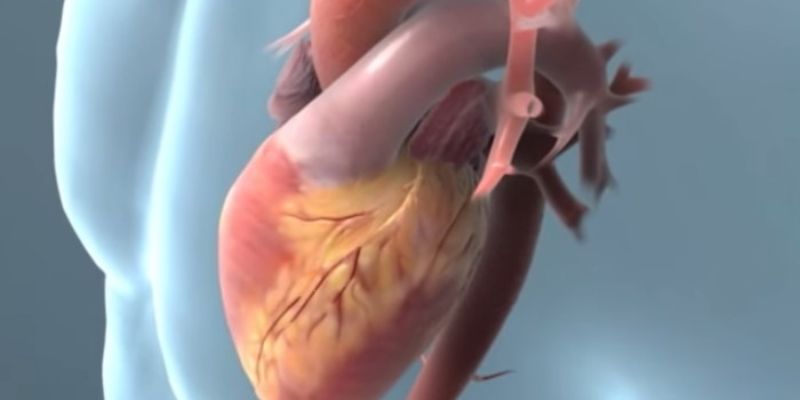What is Mixed Hyperlipidemia
Jan 22, 2024 By Madison Evans
Are you curious about mixed hyperlipidemia? Is it something you or a loved one might be living with? This is an increasingly common condition, and there are some important things to understand if you believe this could apply to your situation.
We’ll discuss the basics of mixed hyperlipidemia, including defining exactly what it means and the various treatments available for people diagnosed with it.
Mixed Hyperlipidemia

Mixed hyperlipidemia is a condition in which the levels of cholesterol and triglycerides in the blood are elevated beyond the normal range. It’s caused by an increase in low-density lipoprotein (LDL) cholesterol, high-density lipoprotein (HDL) cholesterol, and very low-density lipoprotein (VLDL) triglycerides.
While cholesterol and triglycerides are essential for various bodily functions, they can become harmful when their levels become too high over time. When someone has mixed hyperlipidemia, these lipid levels are out of balance and must be managed through lifestyle changes or medication.
The condition can sometimes arise due to genetics; however, it is usually caused by unhealthy lifestyle choices such as an inadequate diet, lack of physical activity, smoking, and drinking alcohol.
Types of Mixed Hyperlipidemia

Mixed hyperlipidemia can be divided into two types – primary and secondary.
- Primary mixed hyperlipidemia, also known as type III hyperlipoproteinemia, is caused by an inherited disorder that affects the body’s ability to process lipids (fats).
- Secondary mixed hyperlipidemia results from other medical conditions or lifestyle choices that can increase lipid levels, such as obesity, diabetes, hypertension, and metabolic syndrome.
Causes of familial combined hyperlipidemia
Familial combined hyperlipidemia (FCH) is an inherited condition in which the body has difficulty processing fats, resulting in high triglyceride and cholesterol levels. The exact cause of FCH is unknown, but a few known risk factors may increase a person’s chances of developing this disorder.
These include a family history of FCH, certain ethnicities (such as Native American and Mexican-American), obesity, diabetes, smoking, and an unhealthy diet.
Some medications can also cause high cholesterol and triglyceride levels if taken for extended periods. These medications include birth control pills, steroids, diuretics, beta-blockers, retinoids (vitamin A derivatives), and certain antidepressants.
Symptoms of Mixed Hyperlipidemia
Mixed hyperlipidemia often has no symptoms, so getting tested for the condition is important if you are at risk. However, if someone with mixed hyperlipidemia does experience any signs or symptoms, they may include:
- Fatigue
- Weight gain
- Loss of concentration
- Shortness of breath
- Pain in legs and feet while walking
- Ankle swelling
- Dizziness
Treatment Options For Mixed Hyperlipidemia
The most effective way to manage mixed hyperlipidemia is through lifestyle changes, such as:
Quitting smoking
Smoking is a major risk factor for mixed hyperlipidemia. Quitting smoking can reduce LDL cholesterol levels and help raise HDL cholesterol levels, significantly reducing your chances of developing the condition or having related health complications.
Reducing stress
Stress has been linked to higher triglyceride and LDL cholesterol levels. Finding ways to manage stress, such as yoga, meditation, exercise, or talking with friends or family, can help lower these elevated lipid levels.
Medication
Medication may be necessary if lifestyle changes alone cannot control your lipid levels. Statins are one of the most common drugs prescribed for mixed hyperlipidemia; they block an enzyme in the liver responsible for producing cholesterol.
Maintaining a healthy body weight
Obesity is one of the main risk factors for developing mixed hyperlipidemia. Eating a healthy, balanced diet and exercising regularly can help you maintain healthy body weight, reducing your chances of developing the condition or its complications.
Exercising
Physical activity has been shown to help reduce LDL cholesterol and triglyceride levels and raise HDL cholesterol levels. Regular exercise can also help you maintain a healthy weight and improve your health.
Eating a nutrient-rich, low-fat diet
Switching to a diet low in saturated fat and cholesterol can help reduce cholesterol levels. Eating fruits, vegetables, whole grains, and lean proteins are key components of a nutrient-rich diet.
Risk Factors of Mixed Hyperlipidemia?
There are several risk factors associated with mixed hyperlipidemia. These include:
Age
Your lipid levels tend to increase as you age, making older adults more prone to developing this condition.
Family History
If one or both parents had high cholesterol levels, then it is likely that you will as well.
Gender
Men tend to have higher levels of LDL than women, although everyone is still at risk.
Diet
Eating a diet high in saturated fat and cholesterol can increase the chances of having mixed hyperlipidemia.
Excess Weight
Being overweight increases the production of the hormone insulin, which can cause an elevation in triglycerides and other lipids.
Smoking and Alcohol Use
Smoking and drinking alcohol in excess can also contribute to higher cholesterol levels and triglycerides in the blood.
Physical Inactivity
Lack of exercise is another risk factor for developing mixed hyperlipidemia, as it leads to decreased HDL (good) cholesterol levels which can cause an imbalance.
Stress Levels
Stress has been linked with higher lipid levels, so managing stress is important for reducing the risks of developing this condition.
It is important to be aware of these risk factors as they can help you identify whether or not you are at risk for having mixed hyperlipidemia. If you have several of these risk factors, it is important to get tested so you can be properly diagnosed and treated.
Making lifestyle changes and following the suggestions of a physician are key to managing mixed hyperlipidemia effectively. By understanding the risk factors associated with this condition, you can identify potential problems before they become more serious.
With proper diagnosis and management, you can control your cholesterol levels and improve your overall well-being.
Does Mixed Hyperlipidemia Count as a Disability?
No, mixed hyperlipidemia does not count as a disability. This is because it is a treatable condition with lifestyle modifications and medications. However, if someone develops an advanced form of the condition that causes severe complications and requires long-term medical care, they may qualify for disability benefits under certain circumstances.
It is important to speak with your doctor or disability advocate to determine whether or not you qualify for these benefits.
Mixed hyperlipidemia can be serious if left unmanaged, so it’s important to be aware of this condition and take the necessary steps to keep it under control. Learning about your risk factors and available treatments can help you manage the condition more effectively.
FAQS
Is hyperlipidemia the same as high cholesterol?
No, hyperlipidemia is a general term for an elevation of lipids (such as cholesterol and triglycerides) in the blood, while high cholesterol specifically refers to an increase in LDL (low-density lipoprotein) or “bad” cholesterol.
Can you recover from hyperlipidemia?
Yes, hyperlipidemia is generally a treatable condition with lifestyle modifications and medications. Speaking with your doctor about the best course of action for managing your case is important.
Are eggs bad for cholesterol?
No, eggs are not bad for cholesterol. Research has shown that consuming one egg daily can help raise HDL cholesterol levels (good cholesterol) and lower triglyceride levels. However, it’s important to be mindful of how many eggs you consume and the overall quality of your diet, as they may contribute to weight gain if eaten in excess.
Conclusion
Mixed hyperlipidemia is a common condition that can lead to serious health complications if not managed appropriately. It's important to recognize the signs and symptoms and understand the underlying causes of this issue. Making meaningful life changes like eating healthy, exercising, and quitting smoking are essential steps that can help treat and manage mixed hyperlipidemia. It's always a good idea to see your doctor regularly so they can assess your health status and prescribe medication when needed. Together, these strategies can help you lessen the risk of developing serious secondary conditions due to high cholesterol or triglyceride levels in your blood.







